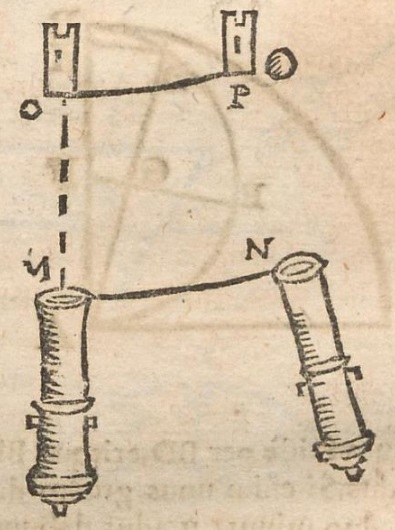Which force deflects air to right in northern hemisphere? Exactly coriolis force
In physics, Coriolis force is an inertial force acting on objects moving in a rotating reference frame according to an inertial frame. In a reference frame with clockwise rotation, the force acts to the left of the object’s movement.
 Wikimedia Commons
Wikimedia Commons
In one with anticlockwise (or counterclockwise) rotation, the force acts to the right. Deflection of an object due to the Coriolis force is called the Coriolis effect. Though recognized previously by others, the mathematical expression for the Coriolis force appeared in an 1835 paper by French scientist Gaspard-Gustave de Coriolis, in connection with the theory of water wheels. Early in the 20th century, the term Coriolis force began to be used in connection with meteorology.
 Image from Cursus seu Mundus Mathematicus (1674) of C.F.M. Dechales, showing how a cannonball should deflect to the right of its target on a rotating Earth, because the rightward motion of the ball is faster than that of the tower
Image from Cursus seu Mundus Mathematicus (1674) of C.F.M. Dechales, showing how a cannonball should deflect to the right of its target on a rotating Earth, because the rightward motion of the ball is faster than that of the tower
Although previously recognized by others, the mathematical expression for the Coriolis force was published in 1835 by the French scientist Gaspard-Gustave de Coriolis in connection with the water wheel theory. In the early 20th century, the Coriolis force was used in connection with meteorology.
Newton’s laws of motion define the movement of an object in an inertial (non-accelerated) frame of reference. When Newton’s laws are turned into a rotating reference frame, Coriolis force and centrifugal force appear. Both forces are proportional to the mass of the object. The Coriolis force is proportional to the rotation rate and the centrifugal force is proportional to the square of the rotation rate. The Coriolis force acts in a direction perpendicular to the rotation axis and to the velocity of the body in the rotating frame and is proportional to the object’s speed in the rotating frame (more precisely, to the component of its velocity that is perpendicular to the axis of rotation).
In popular (non-technical) usage of the term “Coriolis effect”, the rotating reference frame implied is almost always the Earth. As the world turns, observers connected to the Earth must take into account the correct analysis of the movement of objects by the Coriolis force. The Earth completes one rotation per day, so the Coriolis force for movements of everyday objects is usually relatively small compared to other forces; their effects are often only noticeable for movements occurring over long distances, such as large-scale air movement in air or air, in large distances and atmosphere.
These movements are limited by the surface of the Earth, so only the horizontal component of the Coriolis force is generally important. This force causes the moving objects on the surface of the Earth to diverge to the left (in the direction of movement) in the Northern Hemisphere and in the Southern Hemisphere.
 Image from Cursus seu Mundus Mathematicus (1674) of C.F.M. Dechales, showing how a ball should fall from a tower on a rotating Earth
Image from Cursus seu Mundus Mathematicus (1674) of C.F.M. Dechales, showing how a ball should fall from a tower on a rotating Earth
To make an intuitive explanation of the origin of the Coriolis force, consider an object that is limited to following the Earth’s surface and moving north in the northern hemisphere. From the outside, the object does not appear to be moving in the north, but it has an eastward movement (turning to the right with the Earth’s surface). When you go further north, the smaller the “horizontal diameter” of the Earth (the minimum distance from the surface point to the axis of rotation, in a plane perpendicular to the axis), and thus the slower east of the east. As the object moves to the north, higher latitudes, it tends to maintain the eastern velocity at which it begins (instead of slowing down to the lowered eastward velocity of local objects on the surface of the Earth), that is to say eastward.


Comments